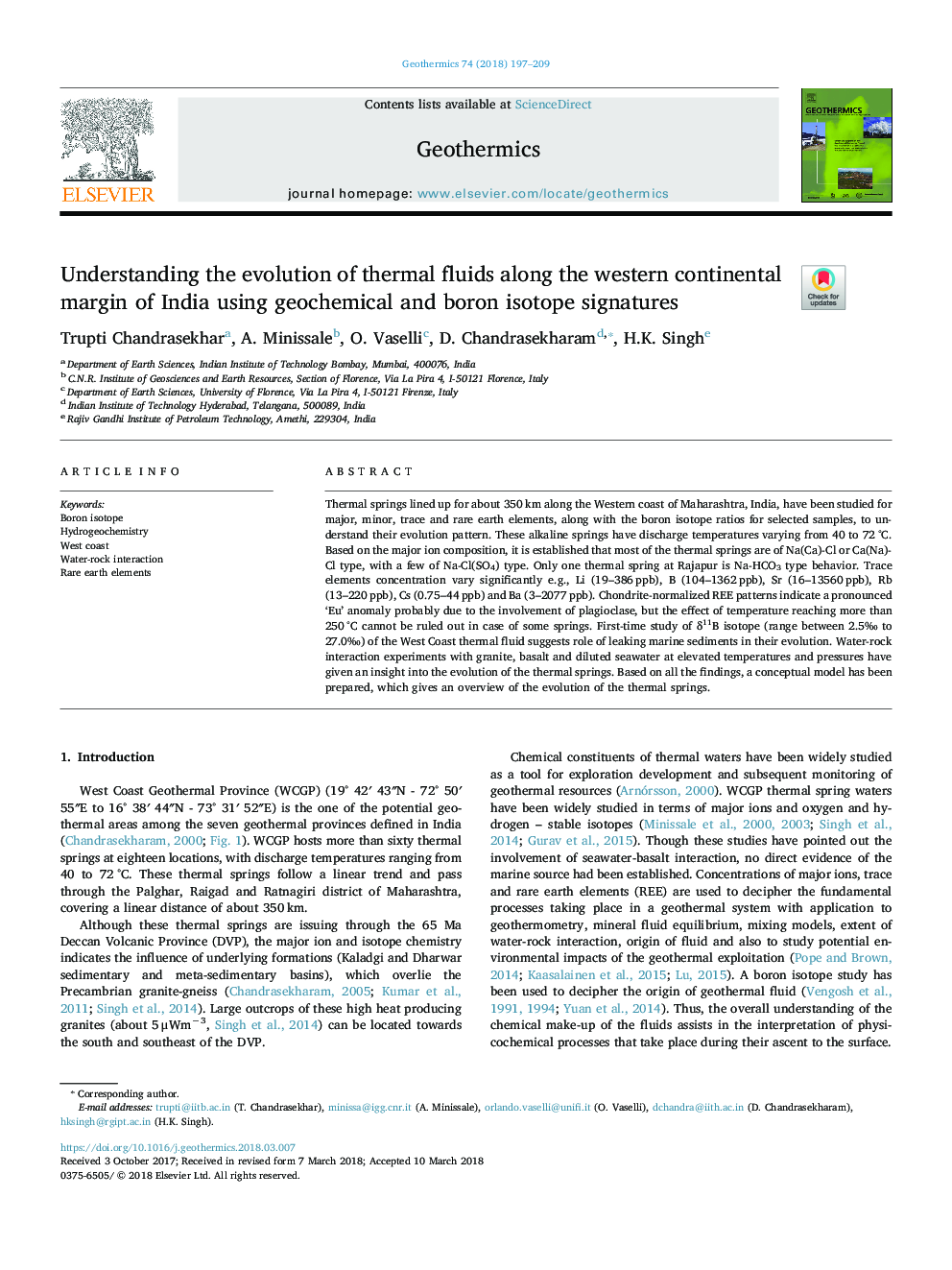| کد مقاله | کد نشریه | سال انتشار | مقاله انگلیسی | نسخه تمام متن |
|---|---|---|---|---|
| 8088558 | 1521895 | 2018 | 13 صفحه PDF | دانلود رایگان |
عنوان انگلیسی مقاله ISI
Understanding the evolution of thermal fluids along the western continental margin of India using geochemical and boron isotope signatures
ترجمه فارسی عنوان
درک تکامل مایعات حرارتی در حاشیه قاره غربی هند با استفاده از امضاهای ایزوتوپ ژئوشیمیایی و بور
دانلود مقاله + سفارش ترجمه
دانلود مقاله ISI انگلیسی
رایگان برای ایرانیان
کلمات کلیدی
ایزوتوپ بور، هیدروژئوشیمی، ساحل غربی، تعامل آب و سنگ، عناصر نادر زمین
موضوعات مرتبط
مهندسی و علوم پایه
علوم زمین و سیارات
ژئوشیمی و پترولوژی
چکیده انگلیسی
Thermal springs lined up for about 350â¯km along the Western coast of Maharashtra, India, have been studied for major, minor, trace and rare earth elements, along with the boron isotope ratios for selected samples, to understand their evolution pattern. These alkaline springs have discharge temperatures varying from 40 to 72â¯Â°C. Based on the major ion composition, it is established that most of the thermal springs are of Na(Ca)-Cl or Ca(Na)-Cl type, with a few of Na-Cl(SO4) type. Only one thermal spring at Rajapur is Na-HCO3 type behavior. Trace elements concentration vary significantly e.g., Li (19-386â¯ppb), B (104-1362â¯ppb), Sr (16-13560â¯ppb), Rb (13-220â¯ppb), Cs (0.75-44â¯ppb) and Ba (3-2077â¯ppb). Chondrite-normalized REE patterns indicate a pronounced 'Eu' anomaly probably due to the involvement of plagioclase, but the effect of temperature reaching more than 250â¯Â°C cannot be ruled out in case of some springs. First-time study of δ11B isotope (range between 2.5â° to 27.0â°) of the West Coast thermal fluid suggests role of leaking marine sediments in their evolution. Water-rock interaction experiments with granite, basalt and diluted seawater at elevated temperatures and pressures have given an insight into the evolution of the thermal springs. Based on all the findings, a conceptual model has been prepared, which gives an overview of the evolution of the thermal springs.
ناشر
Database: Elsevier - ScienceDirect (ساینس دایرکت)
Journal: Geothermics - Volume 74, July 2018, Pages 197-209
Journal: Geothermics - Volume 74, July 2018, Pages 197-209
نویسندگان
Trupti Chandrasekhar, A. Minissale, O. Vaselli, D. Chandrasekharam, H.K. Singh,
